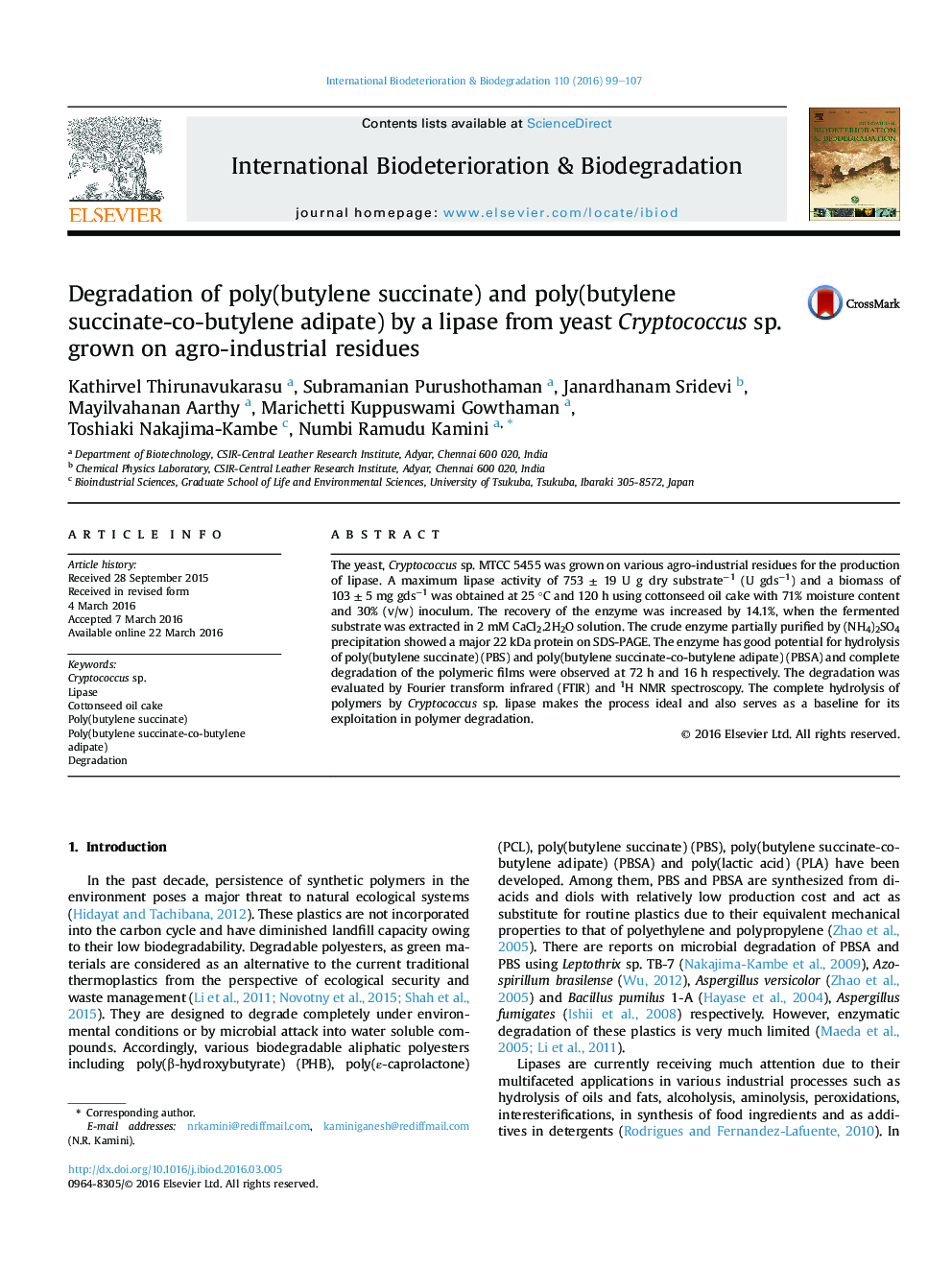| Article ID | Journal | Published Year | Pages | File Type |
|---|---|---|---|---|
| 4364210 | International Biodeterioration & Biodegradation | 2016 | 9 Pages |
•Cryptococcus sp. lipase from agro residues was used for PBS and PBSA degradation.•Growth of yeast on SSF was investigated by scanning electron microscopy.•Degradation of PBS and PBSA was complete at 72 and 16 h respectively.•FTIR and NMR studies confirmed the degradation by cleavage of ester bonds.
The yeast, Cryptococcus sp. MTCC 5455 was grown on various agro-industrial residues for the production of lipase. A maximum lipase activity of 753 ± 19 U g dry substrate−1 (U gds−1) and a biomass of 103 ± 5 mg gds−1 was obtained at 25 °C and 120 h using cottonseed oil cake with 71% moisture content and 30% (v/w) inoculum. The recovery of the enzyme was increased by 14.1%, when the fermented substrate was extracted in 2 mM CaCl2.2H2O solution. The crude enzyme partially purified by (NH4)2SO4 precipitation showed a major 22 kDa protein on SDS-PAGE. The enzyme has good potential for hydrolysis of poly(butylene succinate) (PBS) and poly(butylene succinate-co-butylene adipate) (PBSA) and complete degradation of the polymeric films were observed at 72 h and 16 h respectively. The degradation was evaluated by Fourier transform infrared (FTIR) and 1H NMR spectroscopy. The complete hydrolysis of polymers by Cryptococcus sp. lipase makes the process ideal and also serves as a baseline for its exploitation in polymer degradation.
